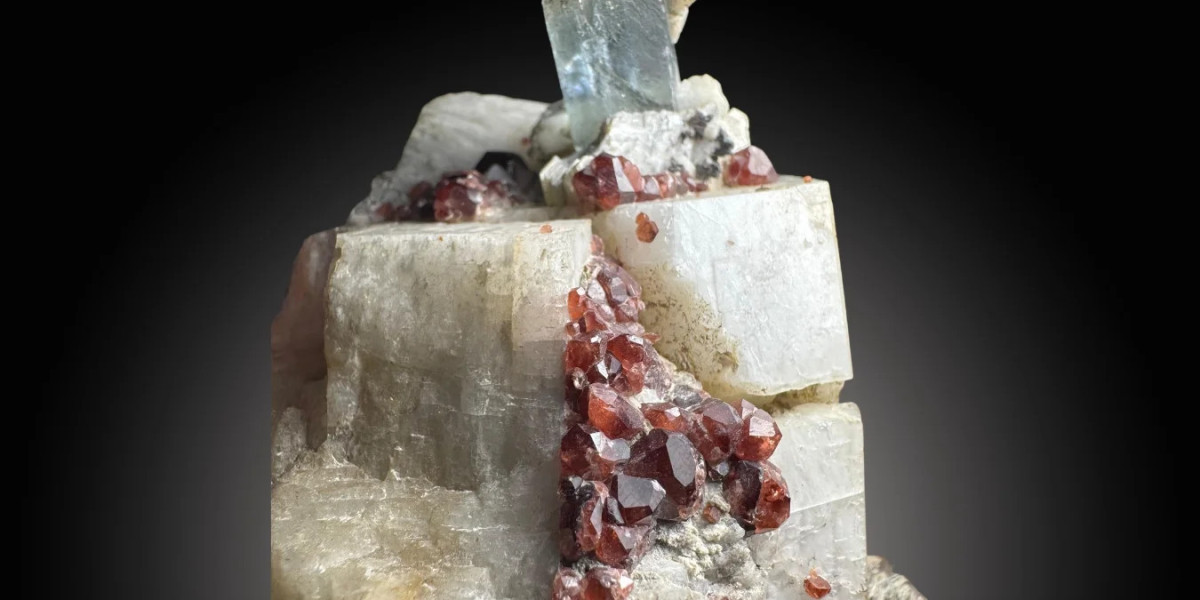Amethyst, with its mesmerizing purple hues, has captivated humanity for centuries. This stunning variety of quartz is not only a gemstone of great beauty but also a crystal steeped in history, mythology, and metaphysical significance. Whether you're a crystal enthusiast, a collector, or simply someone drawn to its allure, amethyst is a gem that deserves admiration. In this article, we’ll explore the origins, properties, uses, and symbolism of amethyst crystal rocks, uncovering why they remain one of the most beloved stones in the world.
What is Amethyst?
Amethyst is a violet to purple variety of quartz (SiO₂), colored by trace amounts of iron and other minerals within its crystal structure. Its color can range from pale lavender to deep, rich purple, with the most prized specimens displaying a vivid, saturated hue. The name "amethyst" comes from the ancient Greek word "amethystos," meaning "not intoxicated," as it was believed to protect its wearer from drunkenness.
Amethyst forms in geodes, cavities within volcanic rocks, where silica-rich water deposits crystals over millions of years. Major sources of amethyst include Brazil, Uruguay, Zambia, and Madagascar, with each region producing stones of unique color and quality.
The History and Mythology of Amethyst
Amethyst has a rich history that spans cultures and civilizations. In ancient Greece, it was associated with Dionysus, the god of wine, and was believed to ward off intoxication. The Greeks often carved drinking vessels from amethyst to prevent overindulgence.
In medieval Europe, amethyst was considered a symbol of royalty and spirituality. Bishops wore amethyst rings as a sign of piety, and it was often used in religious artifacts. The stone was also believed to bring clarity and calmness to the mind, making it a favorite among philosophers and thinkers.
In Eastern traditions, amethyst is associated with the crown chakra, representing higher consciousness and spiritual connection. It has been used in meditation practices to enhance intuition and inner peace.
The Metaphysical Properties of Amethyst
Amethyst is renowned for its metaphysical properties, making it a staple in the world of crystal healing. Here are some of its most celebrated attributes:
Calming and Soothing Energy: Amethyst is often called the "stone of tranquility." It is believed to reduce stress, anxiety, and emotional turmoil, promoting a sense of calm and balance.
Spiritual Growth: Known as a powerful spiritual stone, amethyst is said to enhance intuition, open the third eye, and facilitate connection with higher realms.
Protection: Amethyst is thought to create a protective shield around the wearer, deflecting negative energy and promoting emotional stability.
Enhanced Sleep: Placing amethyst under your pillow or near your bed is said to improve sleep quality and ward off nightmares.
Addiction Recovery: Historically linked to sobriety, amethyst is believed to help overcome addictive behaviors and promote clarity of mind.
Healing and Practical Uses of Amethyst
Amethyst is not only a beautiful gemstone but also a versatile tool for healing and personal growth. Here are some ways to incorporate amethyst into your life:
Meditation: Hold an amethyst crystal during meditation to deepen your practice and enhance spiritual awareness.
Jewelry: Wearing amethyst jewelry, such as rings, necklaces, or bracelets, allows you to carry its calming energy with you throughout the day.
Home Decor: Place amethyst geodes or clusters in your living space to create a peaceful and harmonious environment.
Chakra Healing: Use amethyst to balance and activate the crown chakra, promoting spiritual alignment and inner peace.
Gifts: Amethyst makes a meaningful and thoughtful gift, symbolizing love, protection, and clarity.
Caring for Your Amethyst
To maintain the beauty and energy of your amethyst, proper care is essential. Here are some tips:
Cleaning: Cleanse your amethyst regularly under running water or with a soft cloth. Avoid harsh chemicals or ultrasonic cleaners.
Recharging: Recharge its energy by placing it in moonlight or sunlight for a few hours. Be cautious, as prolonged exposure to direct sunlight may cause fading.
Storage: Store amethyst separately from other gemstones to prevent scratches, as it has a Mohs hardness of 7.
The Symbolism of Amethyst
Amethyst is more than just a gemstone; it is a symbol of wisdom, spirituality, and transformation. Its purple color, often associated with royalty and luxury, represents power, dignity, and ambition. In modern times, amethyst is the birthstone for February and is traditionally given to celebrate the 6th and 17th wedding anniversaries.
Conclusion
Amethyst crystal rocks are a true gift from nature, combining breathtaking beauty with profound spiritual and healing properties. Whether you’re drawn to its calming energy, its rich history, or its stunning appearance, amethyst is a gemstone that resonates with people on many levels. By incorporating amethyst into your life, you can tap into its transformative power and experience the peace, clarity, and protection it offers.
So, the next time you hold an amethyst crystal, take a moment to appreciate its enigmatic beauty and the ancient wisdom it carries. It’s not just a rock—it’s a connection to the Earth, the cosmos, and your inner self.








